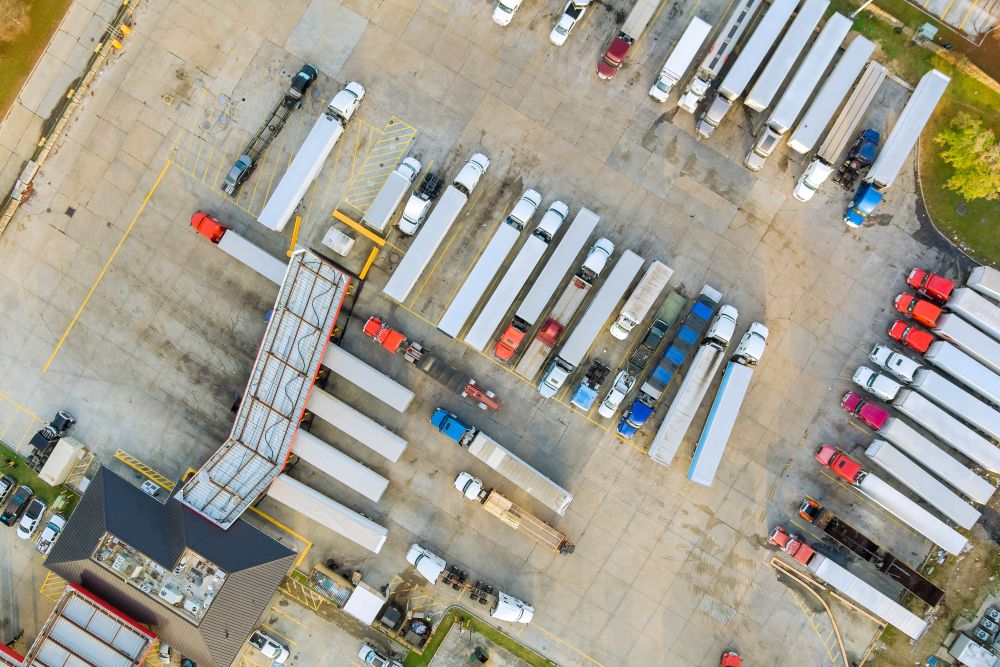
Susie Jones
Sila hudby v nákladnej doprave
Vytvorené: 28. 08. 2024
•
Aktualizované: 28. 08. 2024
Pre vodičov nákladných vozidiel, ktorí nekonečne dlho cestujú naprieč Spojeným kráľovstvom a Európou, hudba neslúži len ako hluk v pozadí - je to spoločník, ktorý zmierňuje nudu a udržiava ich v strehu, angažovanosti a sústredení na cestu. Hudba môže zlepšiť pohodu vodiča a zvýšiť bezpečnosť na cestách.
Prečo je hudba dôležitá pre vodičov nákladných vozidiel
Život vodiča nákladného auta môže byť niekedy osamelý, pretože je veľa hodín na cestách a dni trávi ďaleko od priateľov a rodiny. Hudba môže zmeniť cestu tým, že povznesie náladu a udrží vodiča sústredeného na cestu. Môže tiež poskytnúť pokoj a pohodu počas prestávok vodiča.
Hudba a bezpečnosť vodiča
Hudba nielenže zabraňuje nude na cestách, ale môže ovplyvniť aj bezpečnosť na cestách. Štúdia ukázala](https://www.onstar.com/stories/music-driving#:~:text=Certain%20types%20of%20music%20%E2%80%94%20think%20soft%20rock%2C%20easy%20listening%20or,lead%20to%20faster%2C%20riskier%20driving), že hlasná hudba (viac ako 95 decibelov) môže znížiť reakčný čas až o 20 %. Štúdia tiež preukázala, že hudba s hlasitosťou 55 decibelov zlepšuje výkon pri šoférovaní - tí istí vodiči dosahovali lepšie výsledky ako vodiči bez hudby.
Hudba môže tiež zmeniť vašu náladu v stresových situáciách - jemný rock a džez môžu zlepšiť sústredenie a koncentráciu vodiča. Tí, ktorí majú radi rýchlejšiu hudbu, nech si dajú pozor. Testy dokázali, že hudba s vyšším počtom úderov za minútu skôr spôsobuje, že jazdíte rýchlo a podceňujete svoju rýchlosť. V niektorých prípadoch mala rýchlejšia hudba za následok kľučkovanie, nerešpektovanie červených svetiel a zvýšenú mieru kolízií.
Výskum uskutočnený spoločnosťou Autotrader ukázal, že najlepšie piesne pre vodičov nákladných vozidiel pochádzajú od popových interpretov, pretože zlepšujú koncentráciu - štúdia bola vyhodnotená na základe série testov vnímania nebezpečenstva pri počúvaní zoznamov skladieb od 20 rôznych interpretov. Na prvom mieste sa umiestnil Drake so skóre 59,5/75, na druhom Ariana Grande a Eminem so skóre 58,5/75.
Vplyv na fyzické a duševné zdravie
Nadácia JED zistila, že hudba je prospešná pre duševné zdravie z rôznych dôvodov:
Rozptýlenie - Hudba vás môže odpútať od vecí, ktoré vás trápia, a slúži ako miesto úniku.
Hladina stresu - niektoré druhy hudby môžu znížiť hladinu kortizolu, čo vedie k zníženiu stresu. Pri počúvaní hudby, ktorá vás baví, sa tiež uvoľňujú endorfíny, ktoré vám dodávajú pocit pohody.
Aktivuje mozog - prieskum, ktorý uskutočnila spoločnosť AARP, ukázal, že u tých, ktorí pravidelne počúvali hudbu, sa znížila úroveň úzkosti a depresie. Okrem toho 69 % tých, ktorí často navštevovali hudobné predstavenia, hodnotilo svoje zdravie mozgu ako vynikajúce alebo veľmi dobré.
Zlepšenie nálady - obľúbená pieseň môže niekomu okamžite zlepšiť náladu.
Hudba ovplyvňuje nielen duševné zdravie, ale aj fyzické zdravie vodiča. Štúdia](https://www.medicalnewstoday.com/articles/327016#Music-may-lower-cardiovascular-stress), ktorú uskutočnili viaceré univerzity v Brazílii, Spojenom kráľovstve a Taliansku, naznačila, že počúvanie hudby ovplyvňuje kardiovaskulárny stres. Štúdia zistila zníženie srdcového stresu pri počúvaní hudby počas jazdy.
Konečný zoznam skladieb pre nákladnú dopravu
The Ultimate Trucking Playlist bol vytvorený pre vodičov, pre vodičov. Každý týždeň žiadame našu komunitu vodičov kamiónov, aby hlasovali o tom, ktoré skladby by chceli počúvať na cestách. Zabezpečte, aby sa vaša obľúbená skladba dostala do zoznamu, a to tak, že zamierite na našu stránku Facebook.

Sledujú vodiči nákladných vozidiel televíziu?
Mnohí vodiči trávia čas za volantom sledovaním televíznych programov a filmov. Vďaka streamovacím službám je pre vodičov prístup k najnovším titulom jednoduchší ako kedykoľvek predtým. Okrem toho sú mnohé nákladné vozidlá vybavené možnosťami montáže satelitu - vodiči tak môžu sledovať živé televízne vysielanie z pohodlia svojej kabíny.
Počúvajú vodiči kamiónov audioknihy?
Hudba zohráva dôležitú úlohu pri cestovaní vodiča kamiónu, nie je však jedinou vecou, ktorá zaženie nudu počas dlhých jázd. Po rozhovore so skupinou vodičov kamiónov o ich preferenciách pri počúvaní hudby Road Pro zistili, že na druhom mieste sa umiestnili audioknihy, pričom prvenstvo získalo tradičné rádio.
Používanie audiokníh za volantom sa stalo predmetom kritiky, pričom mnohí naznačujú, že rozptyľujú pozornosť. Hoci sa hudba dá ľahšie vyladiť, neznamená to, že audioknihy nie sú bezpečné. Štúdie zistili, že mnohých vodičov počúvanie audioknihy neoslabuje - to len pri "nudných" kurzoch. Vodiči na zradnejšom teréne mali problém rýchlo reagovať.



